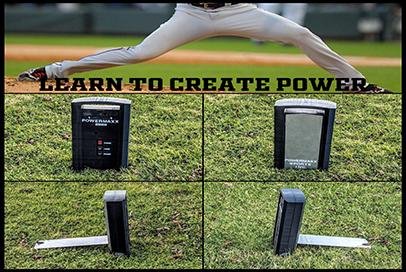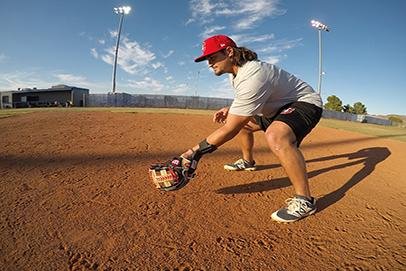Almost all players that hit for a high average show great plate discipline by not swinging at bad pitches. On the other hand hitters with low batting averages are often swinging at bad pitches.
Plate discipline and having an approach at the plate are essential for development of a hitter. One of the most important lessons you can learn is that it's okay to strike out. You want to be a tough out, but too many young players fear striking out and end up swinging at bad pitches simply because they don't want to strike out. You need to understand that you will have a better chance of success if you go up to the plate with a plan. I heard Joe Morgan explain his approach at the plate and have tried to instill a similar approach with my players. Joe Morgan explained that with 0 strikes, he took 2 inches off of each side of the plate. So instead of the plate being 17 inches wide, he treated the plate as being 13 inches wide. With 1 strike he would use the whole plate and with 2 strikes he would add 2 inches to each side of the plate. I try to emphasize with my players that all strikes are not equal and explain that there is a certain zone that each hitter likes to hit the ball in.
Below are a couple of images that show you how the zone would grow using this approach.
On the other side of the equation, the zone can and should shrink as the number of balls increase. When you step up to the plate with 2 balls and 0 strikes, you should be looking for a pitch that is right where you want it. Why swing a pitch on the outside corner of the plate for example when you are ahead in the count? Seems simple when you think about it, but that's just the problem. Most hitters don't think about it before they step into the box!
To develop plate discipline:
- Know the hitting zone before you step up to the plate
- Always pick up the ball right out of the pitchers hand
- Always take full swings with good balance and follow through
Often players will take as many cuts as fast as they can in order to get more swings in. Take your time when you swing the bat. Get in a balanced stance, take a full balanced swing with good timing and rhythm. If you feel like you're being rushed in batting practice, take the pitch. Strive to take only good quality swings. If you take bad swings in practice you won't feel a bad swing in a game. If you only take good swings in practice, you'll build the muscle memory to repeat the good swing during a game and you'll know by feel if you don't.
We covered plate discipline before discussing the development of your plan, because without plate discipline, your plan won't have much chance of success.
Plate discipline can be very difficult to achieve, so don't get down on yourself if you swing at a bad pitch or a few bad pitches in a row. Instead try to learn from each of those swings! That's how you'll develop plate discipline.
You swing at a bad pitch, your first question to yourself should be why. Step out of the box.
Were you too anxious to hit the ball? Yes - Take a deep breath and relax. Try to hit stay back and hit the ball right up the middle.
Develop Your Plan
When developing a general plan for an at bat, you have to be honest about your strengths and weaknesses and incorporate those into your plan. For example if your having difficult laying off of bad pitches, then it might help you to have a really small hitting zone when you have 0 or 1 strike. That way if you swing at a pitch that is a little outside that zone, it will still most likely be in the strike zone.











